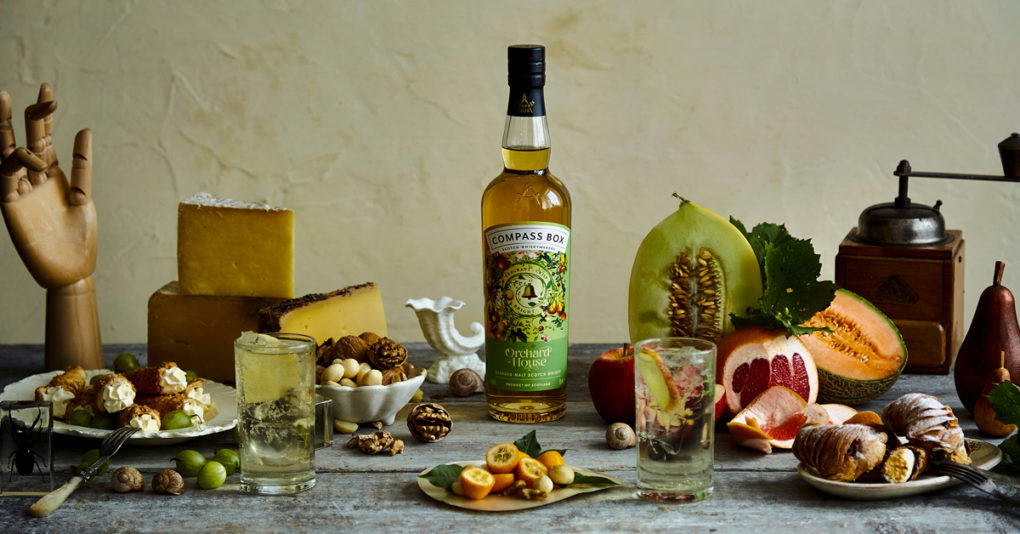
Launched by John Glaser— an experienced industry operator and disrupter known for getting in trouble with the Scotch Whisky Association— Compass Box is now tightening its core lineup, reducing its prices and dialing up its brand. The shift comes after over two decades of earning its name through frequent releases of blended malts and a campaign aimed at encouraging transparency in whisky spirits.
Since 2022, London-based Compass Box’s majority owner has been specialist beverage investor Cælum Capital Limited. Part of the attraction for Cælum Capital was Compass Box’s creative spin on a historic spirit— the unconventional blends with an artistic bent have earned awards and a reputation for Glaser, previously Marketing Director for Jonnie Walker in London, as a pioneer. He made trade headlines in 2016 when he broke the law by disclosing the precise ingredients of two of his whiskies, and subsequently lobbied for changes to U.K. and European Union transparency laws, which only allow for disclosing the youngest component of any spirit product. Glaser announced in March that he was stepping down from Compass Box.
Now Compass Box is aiming to keep an unconventional ethos while making its products more accessible. To start, the core lineup is being reduced from seven to four SKUs. The core seven whiskies were difficult to navigate, without a price hierarchy, and contained an overlap of taste profiles, according to feedback the team received. The hope is also that four products will be able to get on shelves more easily than seven, according to Maurice Doyle, who Cælum Capital-appointed as CEO.
“Typically in the U.S. where we’re stocked there would be two to three different expressions, but it would be almost random which of two or three would be available, and so shoppers couldn’t get any consistency,” said Doyle.
The new lineup— which includes two bestsellers and two new expressions— hit U.S. markets in September, and Doyle said reaction has been positive among distributor partners so far. Limited editions will still be a part of the company’s strategy, but scaled back and at higher price points than the core range, aiming at a different market.
The core price range has also shifted: Previously the top end went over $100, now the range runs from just under $50 to about $75. The aim was to focus on the sweet spot between premium and affordable to more consumers.
Other whiskey brands have been using a similar strategy, especially as the category remains crowded and sales off-premise are down 2.4% in the last 52 weeks ending September 7 compared to the period last year, according to NIQ. Just this week Uncle Nearest released its own approachable cocktail whiskey with an SRP of $28; earlier this month Wolves Whiskey released a $90 flagship offering, a stark price reduction from its luxury limited-edition small batch whiskeys. The motivation behind both these moves is partially to find inroads on-premise, where whiskey is still the largest spirit category by dollar value, although all segments are down in growth.
There’s another challenge Compass Box is aiming to address, too: while part of the company’s success has been the fervor around new releases, the brand itself has fallen to the wayside compared to the noise around coveted expressions. The artistic labels for each will stay, but the Compass Box logo has grown in size on the bottle.
“It’s much easier to grow the business if you’re growing the brand, as opposed to having to tell individual stories behind each expression,” said Doyle.
To that end the company is embarking on a new marketing campaign built around the tagline, “long live interesting,” in which the company will continue to define itself as a brand for curious whiskey drinkers, particularly in the U.S. where consumers are more promiscuous with whiskey subcategories.
“We want to be very relevant to a smaller group of people, and that freedom allows us to be able to push the boundaries and do things in a very creative way,” said Doyle. “So even when we grow and even if we achieve our growth aspirations, we’re still going to be a rounding error in terms of total whiskey market.”